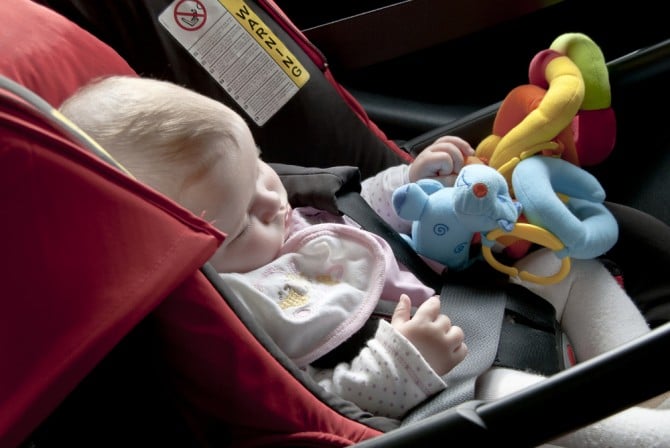
Do you know the recommendations concerning infant and child car seats? Thanksgiving weekend is one of the most highly traveled weekends of the year. Tens of thousands of families with young children will be on the roads, traveling to visit family for the holiday. But no matter when you’re traveling, protecting your children while on the road is paramount, say car accident attorneys with Jacksonville’s Harrell and Harrell.
Auto accidents are the leading cause of death for children ages three to 14 according to the US Centers for Disease Control and Prevention’s National Center for Health Statistics. Statistics show four children 13 and younger are killed and some 530 are injured in car crashes every single day in the United States. Accidents happen even when parents and guardians driving with children exercise the utmost care. Other drivers’ negligence or mistakes can cause devastating crashes that affect innocent, drivers and passengers who just happen to be sharing the road nearby. Still, parents’ choices can contribute to a child passenger’s injuries when they involve improper or unsafe seating.
Car Seat Recommendations Based on Child’s Age and Size
To help keep your children safe on the road, we here at Harrell and Harrell urge you to follow these recommendations from the National Highway Transportation Safety Administration:
- Birth to 12 months: Children up to a year old should always ride in a rear-facing car seat placed in the back seat of your car. That’s because front seat passenger side airbags that deploy unexpectedly can forcefully jar the car seat backward.
- 1-3 years: As your child grows, you may need to purchase larger, weight- and height-appropriate car seats. However, these car seats should remain rear-facing as long as possible.
- 4-7 years: At age four or when your child outgrows a rear-facing car seat, it’s time to upgrade to a forward-facing car seat with a harness, switching to a booster seat when your child surpasses the maximum height or weight specified by the car seat’s manufacturer. Still, children should continue riding in the back seat to best protect them from deploying airbags and shattered windshields in the event of an accident.
- 8-12 years: Continue use of a booster seat until your child is big enough for a seatbelt to fit him or her properly. This means that the lap belt must rest closely across the upper thighs, not the stomach; and the shoulder belt should fall across the shoulder and chest rather than cross the face or neck. Though they’ll likely beg for front seat privileges, remember that the back seat is always the safest spot for children and teens.
If your child is injured in a car crash caused by someone else’s negligence, contact an experienced auto accident attorney with Jacksonville’s Harrell and Harrell by calling 800-251-1111.
